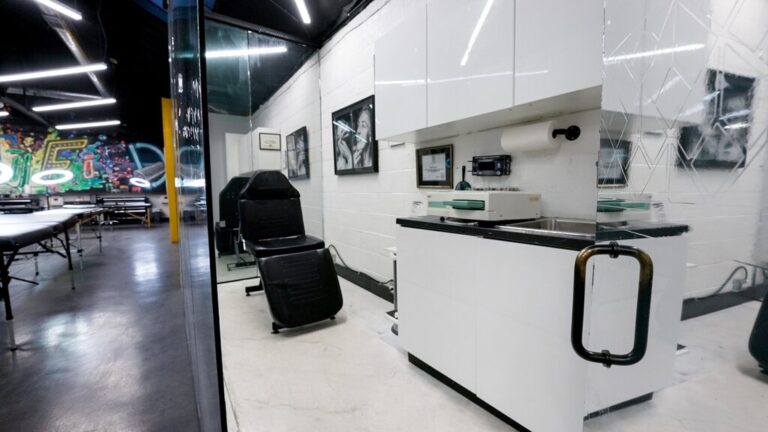Custom Bathroom Vanities: Elevate Your Bathing Experience with Tailored Designs
In today’s world, where personalization is the key to elevating our living spaces, custom bathroom vanities have become a coveted addition to modern homes. These tailored designs offer a unique opportunity to infuse your bathroom with a touch of individuality, reflecting your style and meeting your specific needs. As an experienced homeowner, I understand the importance of creating a sanctuary that not only looks stunning but also functions seamlessly. Custom bathroom vanity provides the perfect canvas to blend form and function, transforming your bathing experience into a luxurious retreat.
Popular materials for custom bathroom vanities
source: pixabay
When it comes to custom bathroom vanities, the choice of materials plays a crucial role in determining the overall look, durability, and functionality of the piece. Here are some popular materials to consider:
- Wood: Timeless and elegant, wood vanities exude warmth and character. From rich mahogany to rustic oak, the range of wood options allows you to create a vanity that perfectly aligns with your desired aesthetic.
- Solid Surface: Offering a sleek and seamless appearance, solid surface materials like quartz or Corian are highly durable and easy to maintain, making them an excellent choice for high-traffic bathrooms.
- Natural Stone: For a luxurious and timeless appeal, natural stones such as marble, granite, or travertine can be incorporated into your custom vanity design. These materials add a touch of sophistication and can be paired with various finishes and hardware.
- Glass: Incorporating glass elements into your vanity design can create a sense of openness and modernity. From tempered glass countertops to frosted glass cabinet doors, glass offers a unique and visually striking option.
- Metal: For a contemporary and industrial flair, metal vanities crafted from materials like stainless steel or brushed aluminum can add a sleek and minimalist touch to your bathroom.
Custom bathroom vanity design ideas
source: pixabay
When it comes to custom bathroom vanity designs, the possibilities are endless. Here are a few inspiring ideas to spark your creativity:
- Floating Vanities: Embrace a minimalist and modern aesthetic with a floating vanity that appears to defy gravity, creating an illusion of spaciousness in your bathroom.
- Double Vanities: Ideal for shared bathrooms or master suites, double vanities provide ample counter space and storage, ensuring a clutter-free and organized environment for multiple users.
- Vessel Sinks: Elevate the visual appeal of your vanity by incorporating a striking vessel sink, which can be crafted from materials like glass, stone, or even repurposed objects like bowls or basins.
- Open Shelving: Incorporate open shelving into your vanity design to display decorative items or keep frequently used toiletries within easy reach, adding a touch of functionality and style.
- Integrated Lighting: Enhance the ambiance and functionality of your vanity by incorporating integrated lighting, such as LED strips or recessed lighting, creating a warm and inviting atmosphere while providing ample illumination for grooming tasks.
How to measure for a custom bathroom vanity
source: pixabay
Accurate measurements are crucial when designing a custom bathroom vanity to ensure a perfect fit and optimal functionality. Here’s a step-by-step guide to measuring your bathroom for a custom vanity:
- Measure the Available Space: Start by measuring the width, depth, and height of the area where you plan to install the vanity. Note any obstructions, such as windows, doors, or plumbing fixtures, that may impact the vanity’s placement.
- Determine the Vanity Size: Based on your measurements and desired functionality, decide on the ideal size for your vanity. Consider factors like the number of sinks, storage needs, and the overall scale of the bathroom.
- Account for Clearance: Ensure that you leave sufficient clearance around the vanity for comfortable movement and accessibility. Typically, a minimum of 30 inches of clearance is recommended in front of the vanity and 24 inches on either side.
- Measure for Plumbing: If your vanity will include a sink or sinks, measure the location of the existing plumbing fixtures or plan for new plumbing installations. This will help determine the placement of the sink(s) and the necessary plumbing modifications.
- Consider Lighting and Electrical: If you plan to incorporate lighting or electrical outlets into your vanity design, measure the locations and plan accordingly.
- Measure for Accessories: If you intend to include accessories like mirrors, towel bars, or shelving units, measure the desired locations and ensure they are accounted for in your vanity design.
Conclusion
Custom bathroom vanities offer a unique opportunity to transform your bathroom into a truly personalized sanctuary. By tailoring the design, materials, and functionality to your specific needs and preferences, you can create a space that not only looks stunning but also enhances your daily bathing routine. With careful consideration of factors like available space, storage requirements, and overall aesthetic, a custom vanity can elevate your bathroom experience, adding a touch of luxury and individuality.
If you’re ready to embark on the journey of creating your dream bathroom, explore the world of Oppein Bathroom Cabinets. With their expertise in crafting custom vanities and a wide range of materials and designs, Oppein can help you bring your vision to life. Visit their website or showroom today to learn more about their tailored solutions and elevate your bathing experience with a personalized touch.






